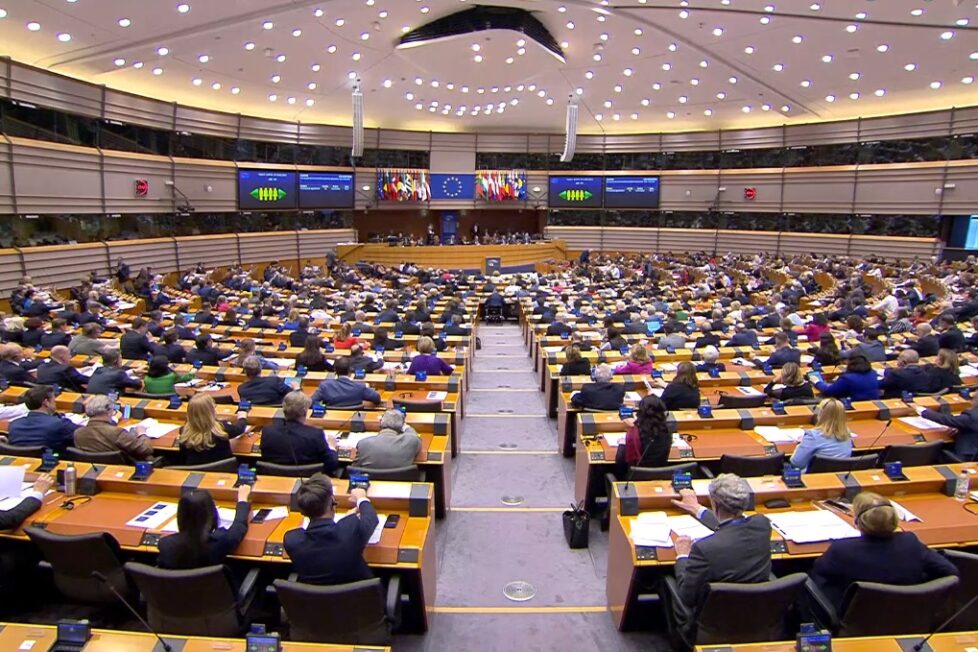EU Parliament Adopts Law to Establish Carbon Removal Certification System

Lawmakers in the European Parliament voted on Wednesday to adopt a new law aimed at establishing a certification system to quantify, monitor and verify carbon removals, and to counter greenwashing.
The adoption, which passed in a 441-139 vote by MEPs, marks one of the final steps towards the launch of a comprehensive carbon removal and soil emission reduction framework in EU legislation, aimed at increasing the use of carbon removals, while addressing greenwashing concerns and building trust, as well as encouraging the development of carbon removal technologies, and creating income opportunities for industries and land managers deploying carbon removal solutions and engaging in innovative carbon farming practices.
Carbon removal solutions range from industrial technologies such as Direct Air Capture projects to natural carbon sinks. Financing for carbon removal projects can come from a variety of sources such as carbon credits or government incentives, creating a need for a system to verify and quantify the impact and quality of the projects.
The initial proposal for the certification framework was announced by the European Commission in 2022, forming part of the European Green Deal, the EU’s strategy to achieve climate neutrality by 2050. While the strategy relies primarily on absolute greenhouse gas (GHG) emissions reductions, emissions that cannot be eliminated will need to be balanced out with carbon removals.
The Commission’s certification proposal detailed a series of criteria to ensure the quality and comparability of carbon removals, including the need to accurately measure the climate benefits and for the activities to be additive to current practices, a requirement for certificates to be linked to the duration of carbon storage, and for the carbon removal activity to preserve or contribute to sustainability objectives such as climate change adaptation, circular economy, water and marine resources, and biodiversity.
The initial proposal, however, was criticized by environmentalEnvironmental criteria consider how a company performs as a steward of nature. More sustainability-focused groups, who argued that the new rules were too vague and susceptible to greenwashing.
Following the Commission’s proposal, the EU Parliament adopted a resolution on Sustainable Carbon Cycles, acknowledging the potential for carbon removals to limit climate change and to address emissions that cannot be eliminated, but warning against relying too heavily on them to pursue the EU’s climate goals.
In negotiations between the EU Parliament and Council on finalized rules for the new certification system, the lawmakers agreed on a framework that differentiated between categories of carbon removal and emission reduction activities, including permanent carbon removals that store atmospheric or biogenic carbon for several centuries, temporary carbon storage in long-lasting products lasting at least 35 years, temporary carbon storage from carbon farming such as restoring forests and soil, and wetland management, and soil emission reduction from carbon farming.
The agreement also called for the establishment of liability mechanisms when developing the certification methodologies, in order to address cases of reversal, in which carbon is released back into the atmosphere during the monitoring period.
Parliament and the Council also extended the scope of the legislation to cover some carbon farming activities that reduce emissions from agricultural soils, while also introducing sustainability requirements for carbon farming activities under the scheme to generate co-benefits for biodiversity and ecosystems, in addition to requirements for all carbon removal activities to ensure that they don’t lead to significant harm to the environment.
Following the vote, rapporteur Lídia Pereira said:
“I am very happy that the European Parliament has given its final green light to the Carbon Removal Certification Framework. I look forward to a future in which those who actively remove and store carbon get a proper incentive to do it. I am also thrilled to see that farmers can have an extra revenue stream for all their efforts!”
With the adoption by Parliament completed, the new legislation will now need to be approved by member states in the EU Council before entering into force.